Sir Jony Ive, Chancellor, Royal College of Art:
“The Royal College of Art is a unique institution, rightly revered globally for the excellence of its postgraduate art and design education. The dynamic created by this new building is remarkable. Our working environments have a powerful influence on the way we create and collaborate, and I am so excited for this new chapter in the life of the college and the inspirational work its graduates will bring into the world.”
The Royal College of Art, the world’s leading university of art and design, unveiled its new campus in Battersea, London on 23 May 2022, the most significant campus development in its history.
The £135 million campus is designed by internationally acclaimed architects, Herzog & de Meuron.
The expansion marks a critical point in the RCA’s transformation into a dynamic, STEAM-focused postgraduate university (Science, Technology, Engineering, Art and Mathematics) expanding into computer and materials science, robotics, advanced manufacturing, complex visualisation and data science, and intelligent mobility, enabling its students to tackle some of the most pressing challenges of our times.
Following an unprecedented grant of £54 million from Her Majesty’s Treasury announced in the Chancellor’s Spring budget in 2016, match funding has been led by a £15 million gift from the Sigrid Rausing Trust, along with support from other national and international philanthropists and industry partners
The new campus will transform the RCA with the following facilities:
- Four storeys of studios and workshops – for Sculpture (housed in the Linbury Sculpture Studio) and Contemporary Art Practice (housed in the Spiegel Design Studio), Moving Image (video and film), and the School of Design. Designed as social and educational spaces of creative transfer and collaboration, the studios will also accommodate temporary exhibitions and large-scale works.
- The Hangar – a double height, 350 sqm multifunctional activity space at the heart of the campus, with vast doors at each end to enable the installation of heavy, large, or complex works of art.
- Robotics Hangar– a smaller hangar and gallery space providing research testing and assembly areas for intelligent mobility, design engineering, sculpture and robotics, with aerial and aquatic robotics.
- Rausing Research & Innovation Building – eight floors of dedicated independent and confidential research space for areas such as materials science, soft robotics, advanced manufacturing, intelligent mobility, and AR and VR visualisation, housed in the Snap Visualisation Lab.
- The Helen Hamlyn Centre for Design – a new purpose-built home for the Helen Hamlyn Centre for Design, which undertakes design research and projects with industry that contribute to improving people’s lives. The Design Age Institute now adjoins the Centre.
- Innovation RCA – housed in the Clore Innovation Centre – is the RCA’s centre for enterprise, entrepreneurship, incubation and business support.
- Seminar & Conference Facility – the top floor of the Rausing Research & Innovation Building housing a new seminar and conference facility for use by the College and external partners.
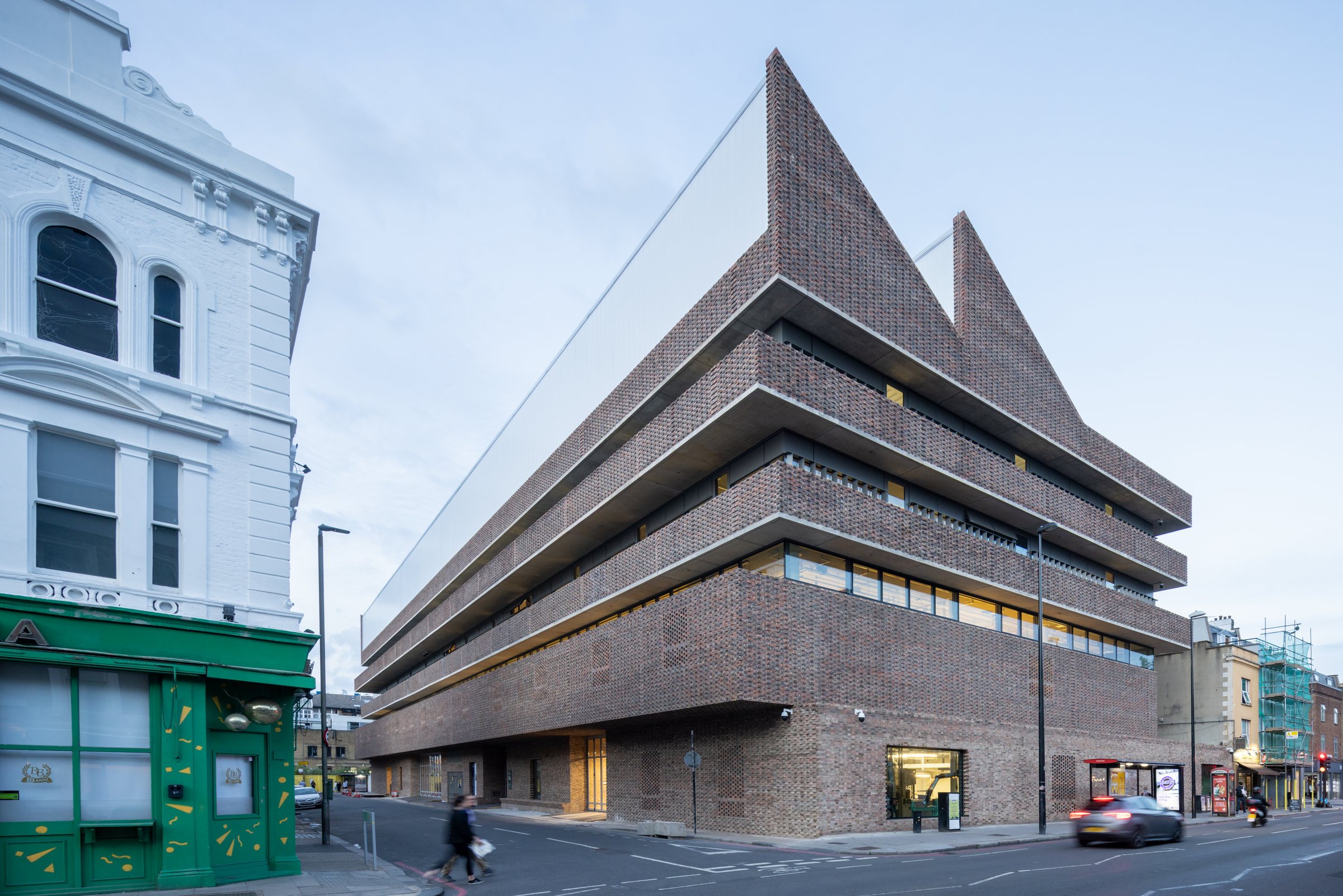
The new development will ensure that the RCA continues to reach out towards its local community. Public walkways intersect the site, referencing the original Victorian street grid of this quarter of London. The RCA’s close neighbours include the headquarters of fashion designer Vivienne Westwood and architects Foster & Partners.
The interior fit-out of the new campus celebrates the iconic designs of RCA alumni and staff, bringing together furniture and fittings selected for their approach to sustainable manufacturing and energy efficiency, concepts which are central to the new development. The building has been certified as BREEAM excellent following a £3 million investment, using a combination of integrated design and most significantly a commitment to low and zero carbon technologies.
To coincide with the launch, the RCA has announced a new 5-year strategy for 2022-2027 which sets out its ambition to use interdisciplinary thinking to solve global issues, whilst continuing to attract the world’s most talented faculty, students, artists, designers and supporters. Key initiatives include:
- Providing new insights and leadership into four twenty-first century challenges: mobility and urbanism; climate crisis and the circular economy; ageing populations and inclusivity; Design & AI
- A new MA structure, new flexible learning models, and new qualifications, including MA units in Design Robotics and Gaming
- Doubling the percentage of Black British and People of Colour students and researchers from underrepresented backgrounds with increased scholarship and student support funds
- Deliver a pipeline of new start-ups into the UK economy, supporting an additional 20 start-ups per year through InnovationRCA, backed by a new £3m Design and Impact fund.
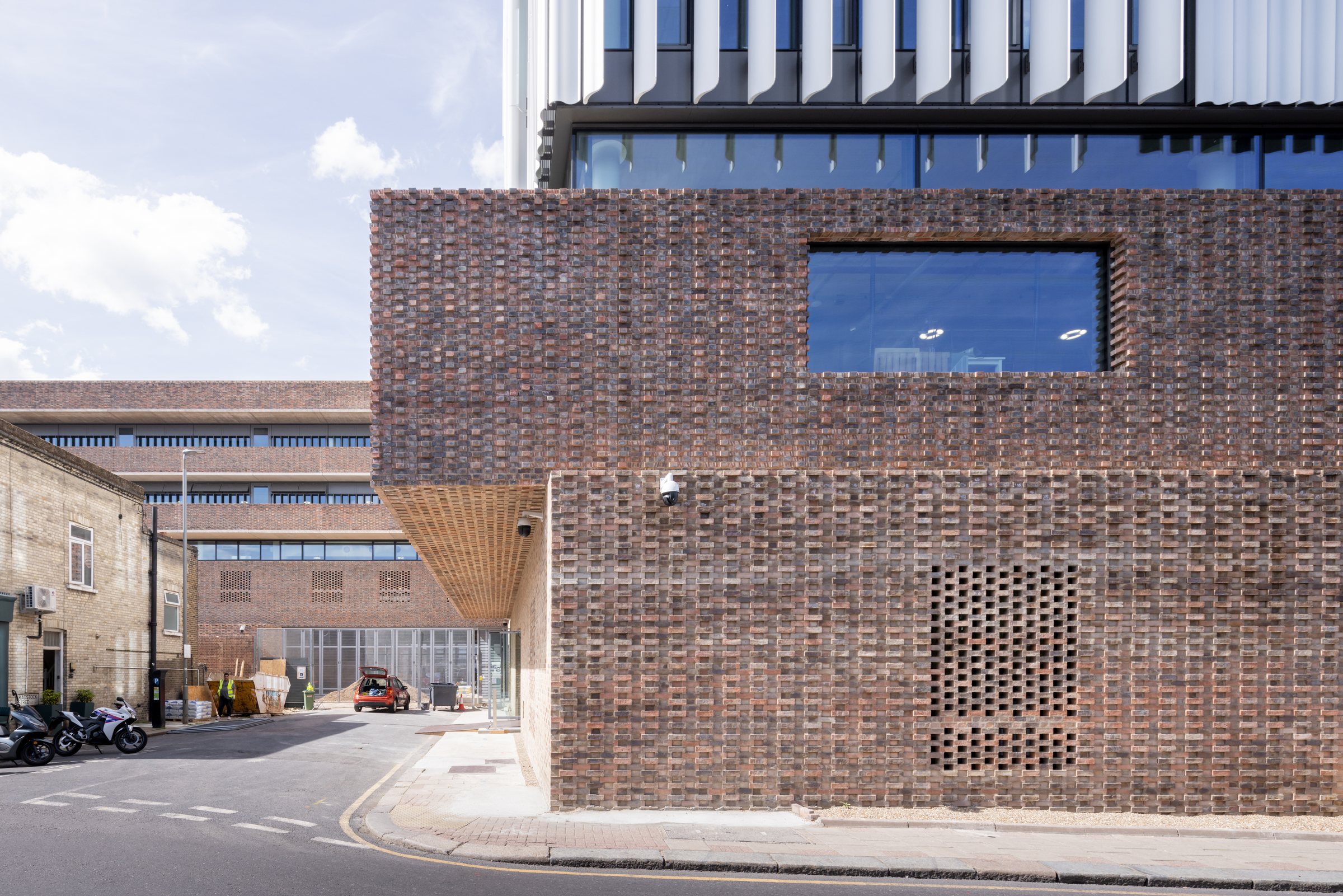
Dr. Paul Thompson, Vice-Chancellor, Royal College of Art, said: “This wonderful new building embodies all that is best and most vital about the RCA – open, collaborative, interdisciplinary and bold. We are exceptionally grateful to the support to HM Treasury for helping the RCA to realise its ambition of bringing creativity, tech, fine art and innovation all together under one roof and these new facilities will ensure the next generation of world-leading designers, artists and creative entrepreneurs have all of the best possible chance to envision a better future for People and Planet.”
Herzog & de Meuron, said: “The RCA campus in Battersea is conceived as a porous and flexible ‘territory’ of platforms upon which the varied needs of the RCA curriculum are given space to change and grow, enabling the transformation of space as needed during this process. The studio and research buildings are designed as communities unto themselves – a place that encourages interactions between students, faculty and staff. Our intention is also to create a civic connector, encouraging circulation through the site and inviting exchange between members of the RCA community, the neighbourhood and wider city.”
Sir Peter Bazalgette, Chair and Pro Chancellor of the RCA, added: “I was delighted to take over the Chairmanship of the RCA’s governing body in 2022 at this incredible moment in the College’s 185-year history: its largest ever building project and certainly one that will see us supporting many future generations of artists and designers. I must thank my fellow members of Council for the many hours of advice and support they’ve offered the executive team of the RCA. In particular, I would like to thank my predecessor Baroness Rebuck, for her help and leadership on the Battersea South project, and ensuring that the RCA’s ambitious vision became a reality.”
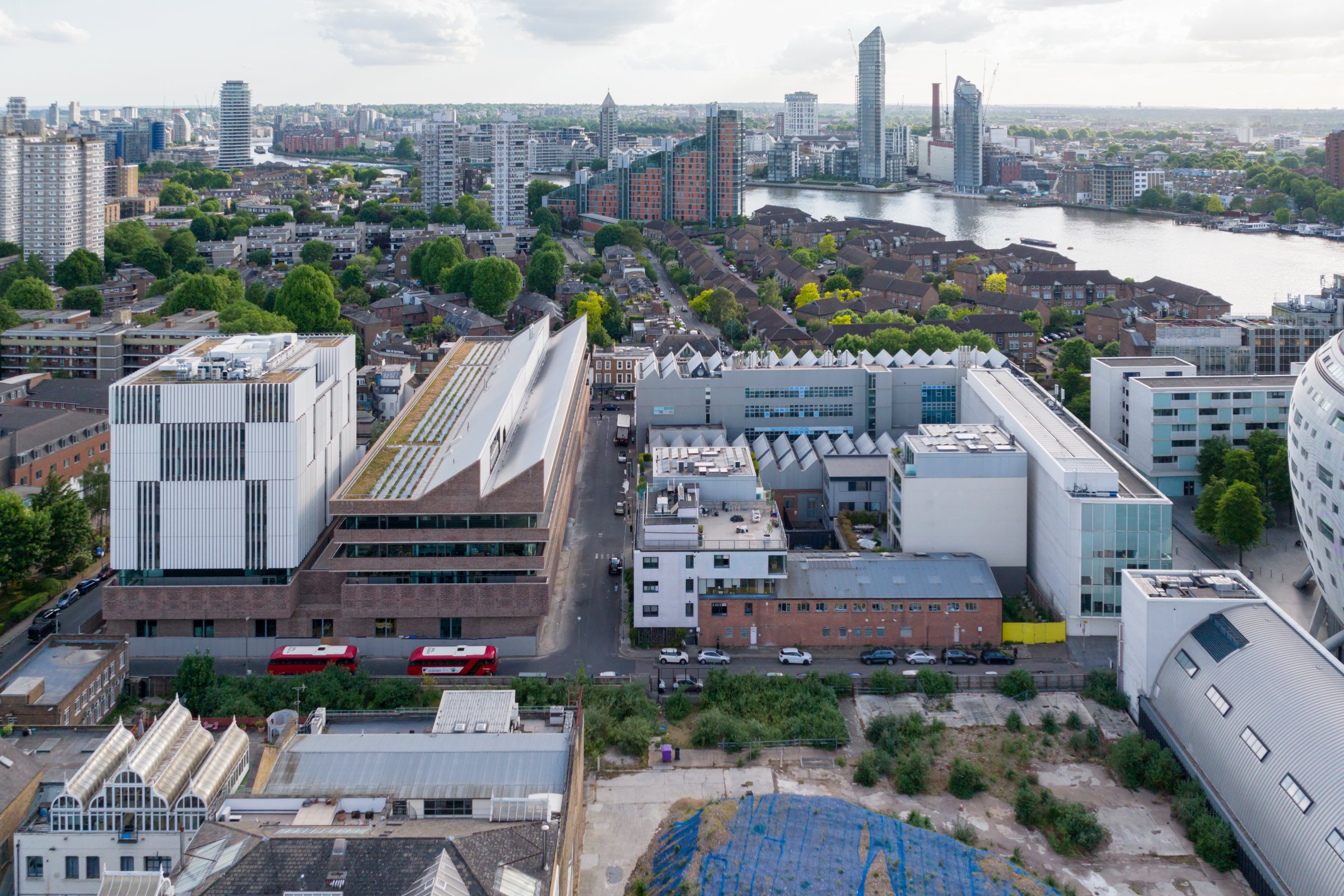
Architectural Statement:
A new Battersea campus
The Royal College of Art’s new Herzog de Meuron campus in Battersea delivers a formula for education, research, and entrepreneurship that explores the creative possibilities at the intersection of science, the arts, and design. It is a flexible architectural solution that adapts to the evolving programmes of teaching and research at this 185-year-old institution, with the aim to unite and strengthen the culture of creativity, innovation and entrepreneurialism at the Royal College of Art.
The site occupies the urban block to the south of the existing RCA Battersea buildings within the Battersea Creative Quarter. The project delivers 15,500 sqm of workshop, studio and research space. It is composed of a ground floor base of workshops and manufacturing facilities supporting a low-rise four-storey Studio Building along Howie Street, and the taller eight-storey Rausing Research & Innovation Building prominently located along Parkgate Road. Howie Street will become the main thoroughfare for a combined RCA Battersea campus.
The textured brickwork and large, north facing clerestory lights of the workshop and studio building present a unique yet contextual profile to Battersea Bridge Road; the metal fins of the Rausing Research & Innovation Building offer a distinct skyline identity for the campus.
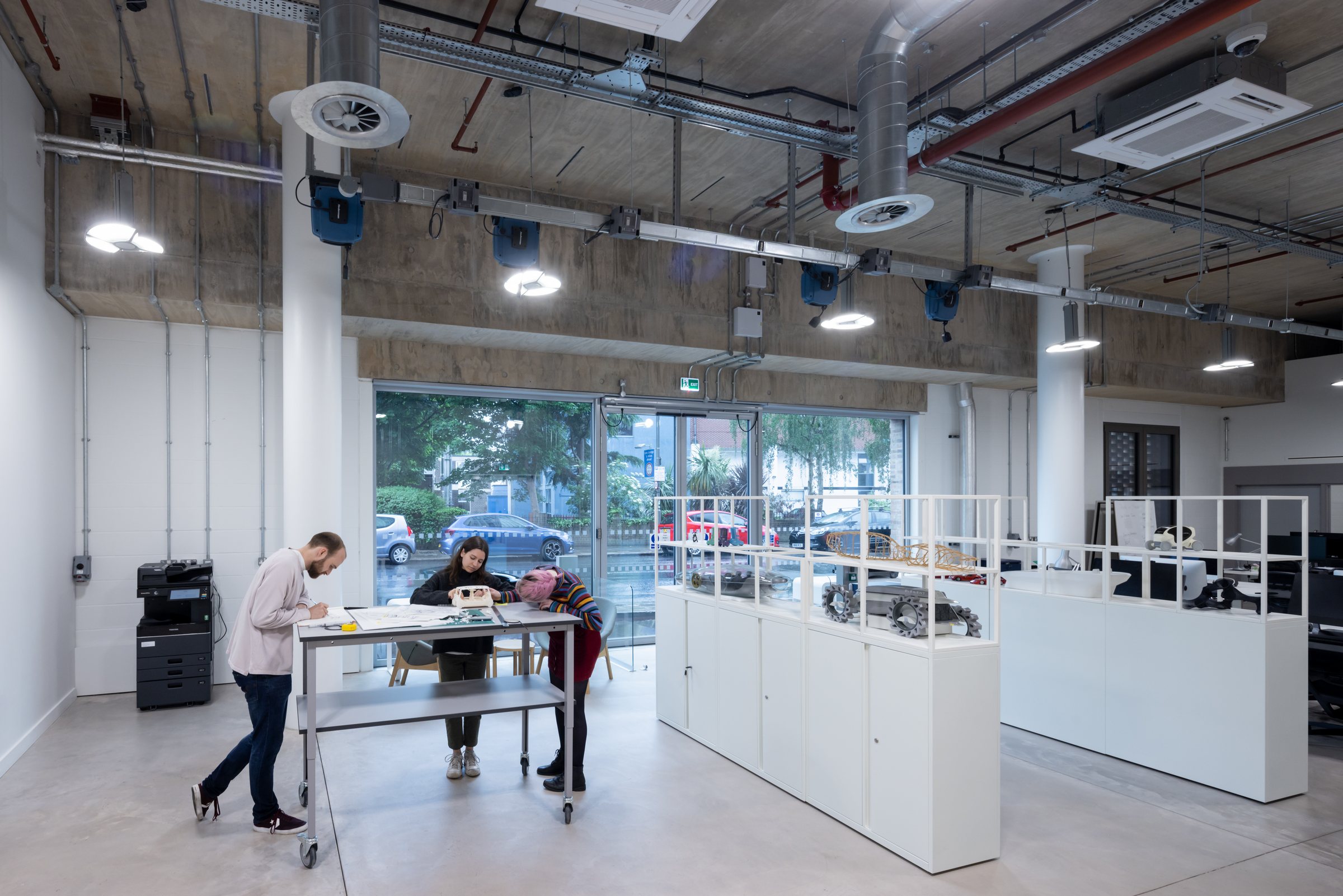
Connectivity and flexibility
The workshop is the nucleus of RCA activities. Workshop spaces are arranged as a series of inter connections over which the upper studio spaces span and overhang, and incorporate the entrances to the studio and research spaces. The street level arrangement forms a passageway that connects the existing RCA buildings along Howie Street and allows for views through the site, with large picture windows providing visual connections to the workshops. The overhanging volume of the studio levels above provide covered walkways and sheltered seating areas at street level, as well as balconies and terraces above.
A portion of the previously closed-off Radstock Street is incorporated into the ground floor. Upper studio floors span across this space to create a double-height “Hangar” – a flexible zone for the production and display of large-scale work that is also spacious enough to host RCA assemblies and events, such as sculptures or exhibits during the annual Show. This space can also be opened up, creating enhanced exhibition space and new public realm between Howie Street and the main reception area of the campus.
The studio floors provide a series of three terraced floorplates, each comprising approximately 2,000 sqm of high-quality workspace. These spaces contain a flexible infrastructure that can be adapted to a range of RCA programmes from Contemporary Art Practice through to Design Products and Sculpture. In addition to the essential qualities of natural light and air supplying the indoor studios, the concrete floorplates extend to form cantilevering external galleries, providing shade and natural ventilation, and an immediate connection to the outdoors for those working within.
The Rausing Research & Innovation Building is organised above the ground floor workshops as a cubic stack of seven 560 sqm floorplates. Sharing the principles of the studio floors, each space is a flexible research unit equipped with provisional laboratory space. InnovationRCA, the College’s centre for entrepreneurship and business incubation, is located in the Clore Innovation Centre on levels 5 & 6. Level 7 contains an event space and terrace with views towards the north and to the rest of the RCA Battersea campus.
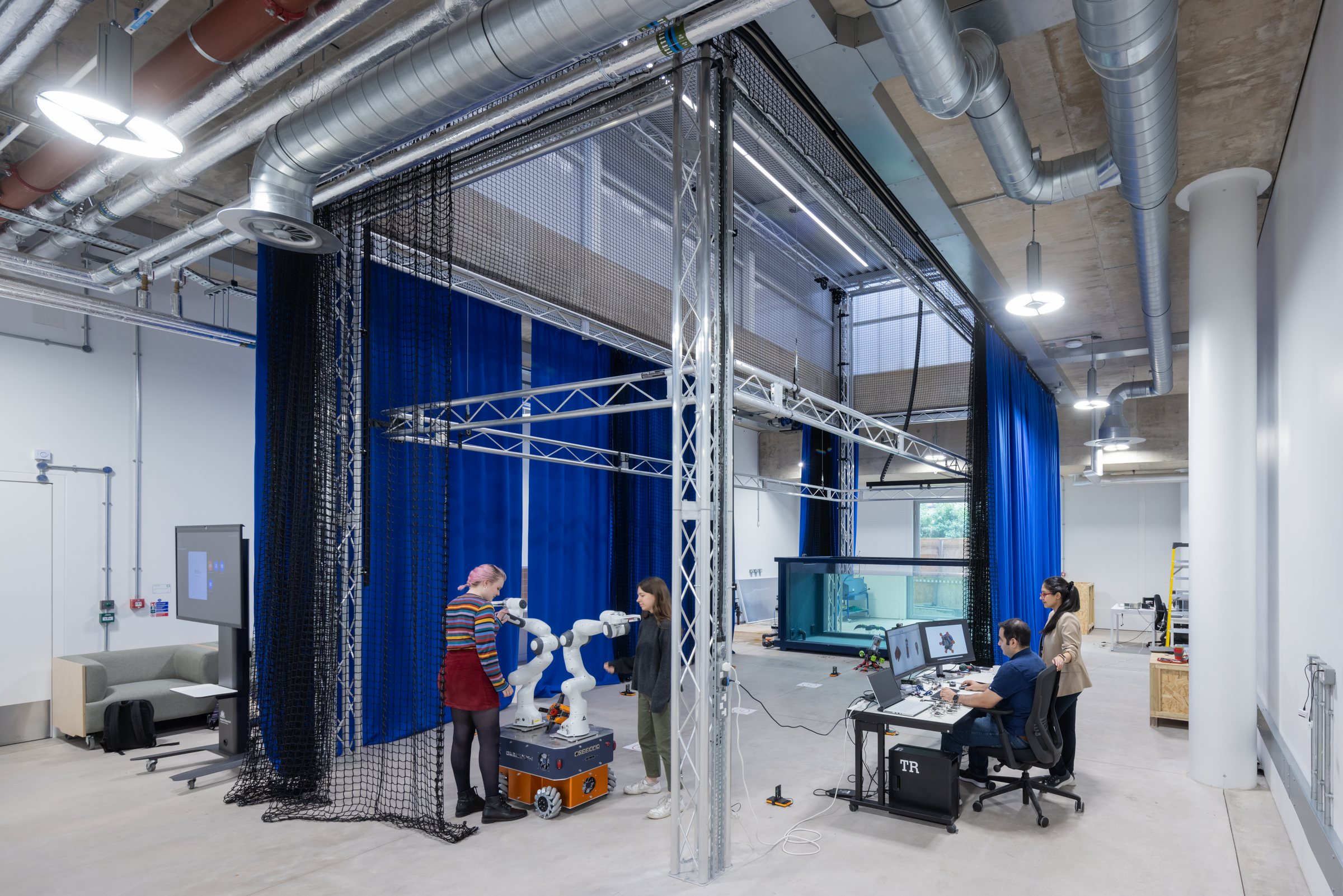
Robust materiality
To support its role as an efficient and flexible building that can adapt to different modes of working, the materiality of the new Battersea campus is simple and robust. The interiors are formed from a combination of concrete flat slabs supported on an 8m grid of concrete filled steel tubes, with an exposed and adaptable services arrangement. The ground floor façade is formed from a simple stock brick in a textured Flemish bond, perforated in areas with open patterned brickwork to provide ventilation to the workshop and sculpture studio behind adjustable glass panels. On the upper studio storeys, the ground floor brick pattern is turned inside-out, exposing the cut ends of the header bricks and marks of manufacture through a distinctive texture. The Rausing Research & Innovation Building departs from the masonry language with a vertical composition of sinuous white fins, calibrated across the façade to moderate solar gain and glare, and facilitate natural ventilation to the workspaces within.
Environmental resilience
The building has achieved a BREEAM Excellent rating. Its efficient form is derived to deliver the correct levels of daylight control, insulation, and natural ventilation within a flexible envelope, combined with durable, low maintenance materials and adaptable services organisation. The exposed concrete superstructure has a high content of cement replacement, and its mass provides additional thermal assistance to the passive interior. In addition, there is an extensive solar array located on the roof of the studio building to ease overall energy loads, set within a combination of ‘blue’ and ‘brown’ roofs to assist with sustainable drainage requirements and promote greater biodiversity.
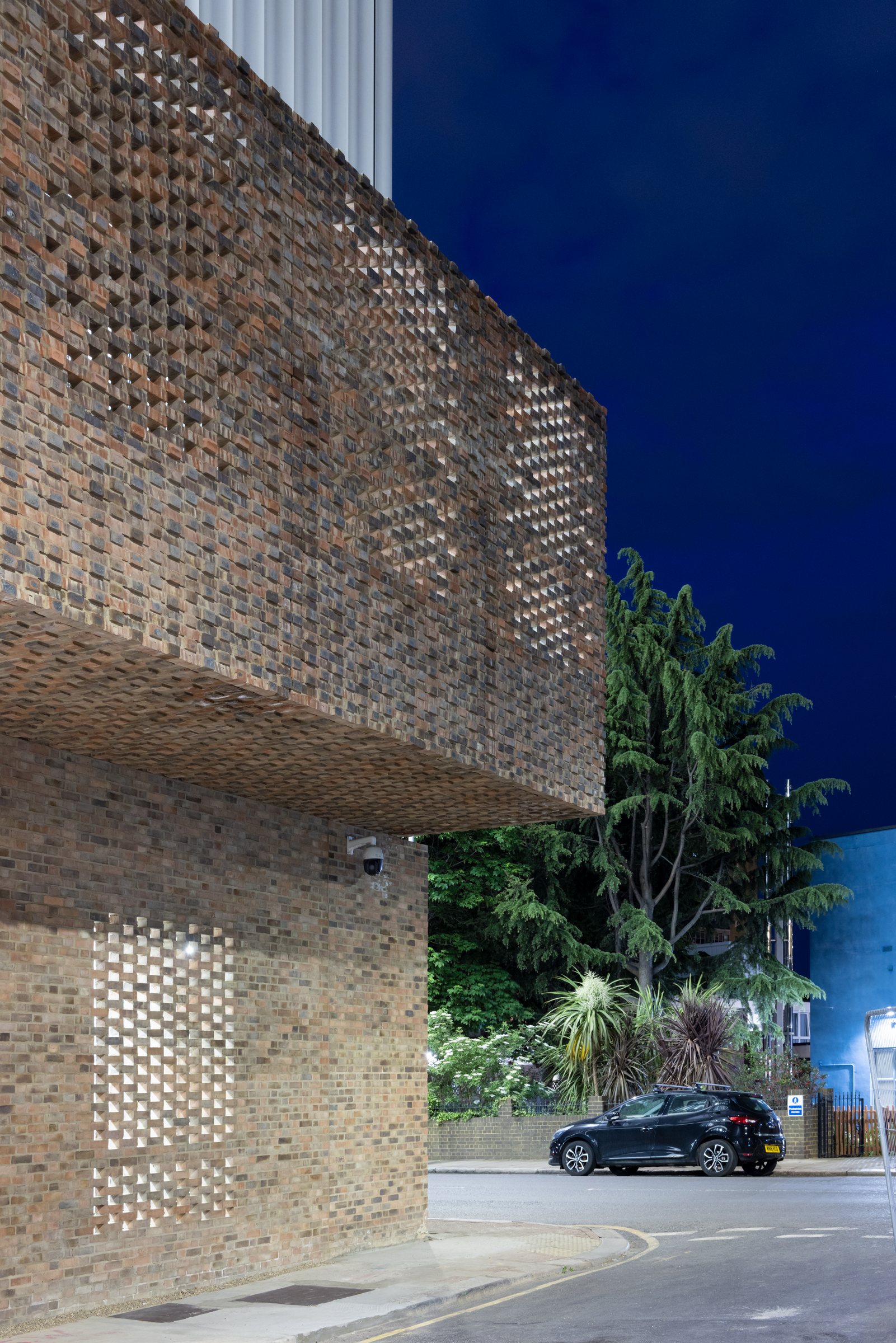
Architectural Fact Sheet:
Overview: The Royal College of Art (RCA) is the world’s largest community of postgraduate art and design students. For eight consecutive years, the RCA has been ranked as the world’s number one university of art and design – attracting artists, designers and innovators from across the globe. Its campuses have been designed by notable figures in the field of Architecture: Sir Hugh Casson and ‘Jim’ Cadbury-Brown designed the 1961 Darwin building in Kensington, now a grade II listed building; Haworth Tompkins created the Painting, Dyson & Woo buildings in 2009, 2012 and 2015 as the RCA expanded its campus in Battersea and now, in 2022, the boldest addition yet to its estate, designed by architects Herzog & de Meuron.
The Herzog & de Meuron building marks a critical juncture in the RCA’s history as it embodies the College’s transformation into a new paradigm for the creative arts in higher education: a dynamic STEAM-focused postgraduate university, bringing STEM based research and teaching (Science, Technology, Engineering, and Maths) into play with the traditional arts and design disciplines for which the RCA is rightly renowned.
The new Herzog & de Meuron Battersea building is the physical manifestation of this ambition. The 15,500 square-metre development will transform the Royal College of Art by delivering enhanced workshop and studio space for students, as well as communal and social facilities to create a meeting point for talent and ideas. It will bring together areas from sculpture to computer sciences, creating cross-disciplinary answers to global questions in areas such as ageing populations, sustainability, rapid urbanisation and artificial intelligence.
The project also brings benefits to the local community with new public realm spaces, a public engagement programme, and improvements to the area of Radstock Street in front of the Rausing Research & Innovation Building. Described by one architectural critic as ‘rugged’ the Herzog de Meuron building gives more than a passing nod to its predecessor, the Darwin building in Kensington which is regarded as one of Britain’s finest examples of ‘Brutalism’. The stacked workshops of Darwin are echoed – but with greatly increased floor plates – in the Herzog & de Meuron building. The vast, saw-tooth roof, supported on slender white steel columns, reinforces the RCA concept of a ‘factory of ideas’ and mirrors the saw-tooth roofs in the adjacent Dyson and Woo buildings.
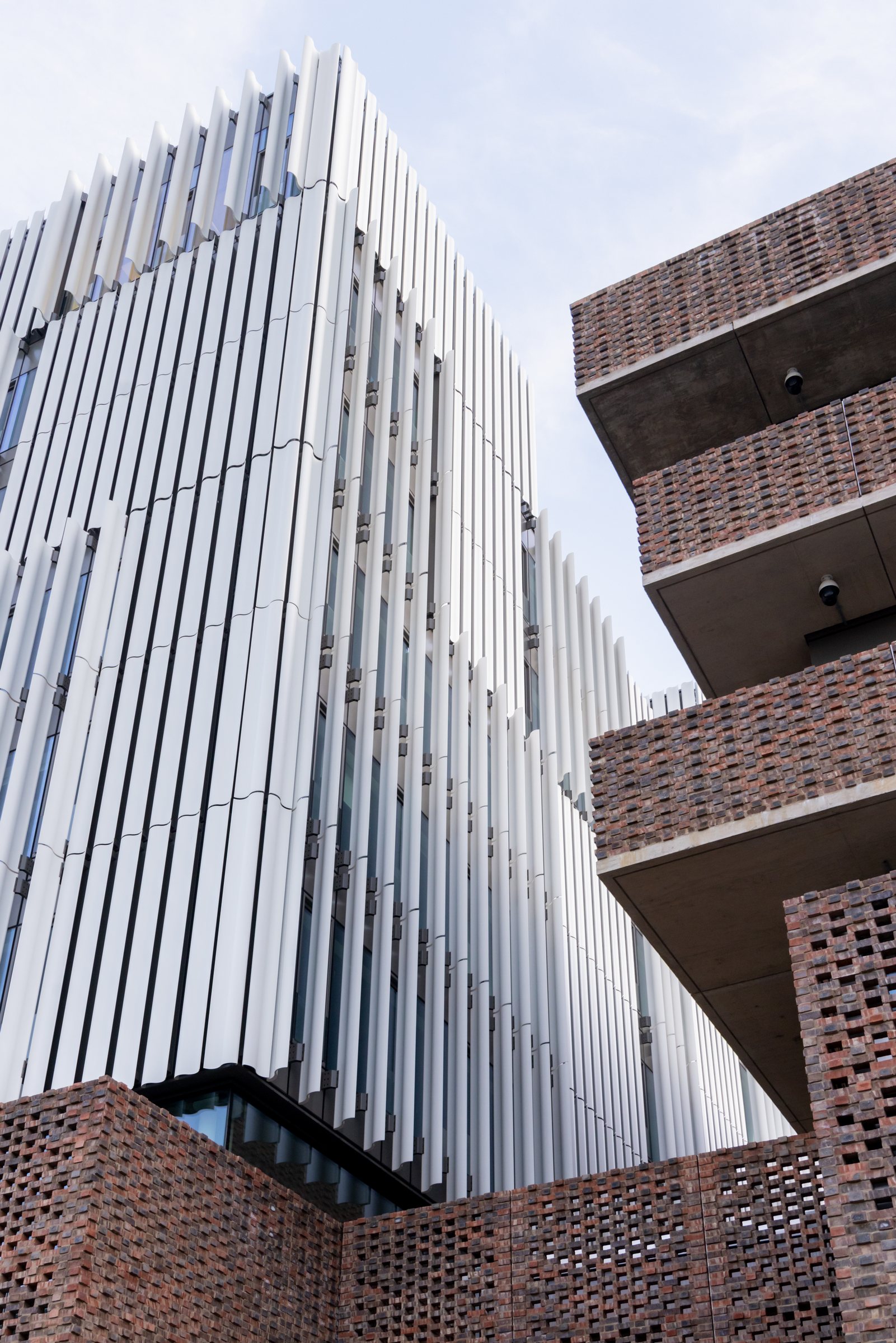
Location: Royal College of Art Battersea, Parkgate Road, London SW11 4NL
The new campus is located to the south of, and adjacent to, the RCA’s current Battersea campus within the Battersea Creative Quarter. Howie Street, running west to east, is the main thoroughfare for the united Battersea Campus.
Battersea is increasingly becoming known as London’s new creative quarter, with a wealth of cultural assets and a growing number of galleries, alongside the arrival of TfL’s new Northern Line extension in September 2021. Innovative tech companies are moving in, including Apple, which is making Battersea its UK headquarters. The RCA’s new flagship building will add to this vibrant mix and aligns with the London Borough of Wandsworth’s ambitions for the area.
Key Project Dates:
• 2016 RCA given exceptional funding of £54M by the UK Government to create a new building in Battersea
• 2016 RCA acquires the freehold site on Howie/Elcho/Parkgate streets.
• 2016 Herzog & de Meuron appointed architects following an international invited competition
• 2017 Planning approved by Wandsworth Council
• 2018 Construction starts with Kier Construction London Ltd
• 2021 Building Completed
• 2021 Fit-out starts
• May 2022 Opening of new RCA Campus
Project Leadership: The development of the new Battersea building is overseen by the RCA. The RCA is led by its Vice-Chancellor Dr Paul Thompson and its non-executive members of Council, Chancellor, Sir Jony Ive and Pro Chancellor Sir Peter Bazalgette.
Executive Architecture Team: Herzog & de Meuron as Architect / Lead Designer with Mott MacDonald as Structure and Services engineer
RCA Project Specifications:
Total area: 15,500 square metres
Site area: 47,038sqft / 4,370sqm
The Rausing Research & Innovation Building: across 8 floors 3,723 sqm
The Studio Building: across 4 floors, 8,368sqm of which 5,753sqm is dedicated studio space.
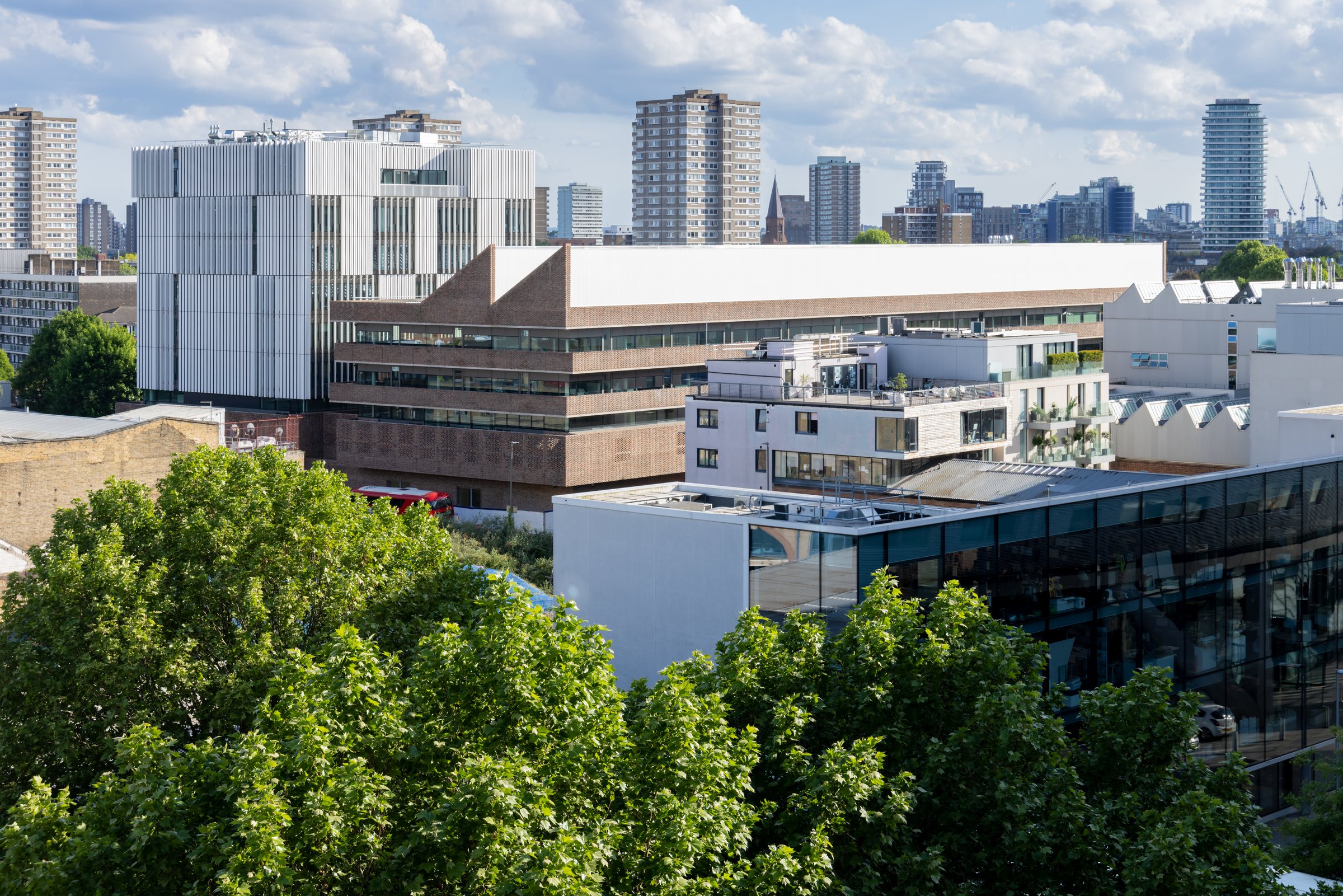
The Studio Building: The Studio Building consists of four storeys of studios and workshops for Sculpture and Contemporary Art Practice and Design Products. Designed as social and educational spaces of creative transfer and collaboration, the studios will also accommodate temporary exhibitions and large-scale works.
The Hangar: Located in the Studio Building, the double-height hangar is a multifunctional activity space at the heart of the reconfigured campus for large-scale events and the assembly and exhibition of projects. The Hangar will become the focal point for RCA artists and makers and their interactions with the public including events, screenings, performances, exhibitions and graduate shows.
Robotics Research: A smaller additional hangar and gallery spaces offer flexible research testing and assembly areas for intelligent mobility, design engineering, sculpture and robotics. In these purpose-built spaces, students and researchers can undertake cutting-edge research, learning and teaching, combining creative techniques, mechanisms and functions from nature and art, along with approaches from the experimental sciences. Robotics Research will further the development of new technologies with a focus on aquatic and aerial robotics, and robotic arms for use in construction and engineering.
The Rausing Research & Innovation Building:
The Rausing Research & Innovation Building consists of eight floors of dedicated independent and confidential research space providing a new home for:
• The Helen Hamlyn Centre for Design, which undertakes design research and projects with industry that contribute to improving people’s lives.
• The Intelligent Mobility Design Centre and MA Intelligent Mobility are now united across two floors.
• InnovationRCA – housed in the Clore Innovation Centre on levels 5 and 6 of the Rausing Research & Innovation Building – providing workspace for start-ups as well as facilities for the centre’s enterprise, entrepreneurship, incubation and business support activities.
• The Computer Science Research Centre, enabling cutting-edge research and innovation at the interface between art, design and computer science with immediate and tangible impact.
• The Materials Science Research Centre – focusing on the invention and the experience of materials to address real world challenges, specifically environmental sustainability, and human health and wellbeing.
• The Robotics Laboratory – combining creative techniques, mechanisms and functions from nature and art, and approaches from the experimental sciences, to develop new robotic technologies enhancing access, safety and performance in a wide range of industrial applications.
• Seminar and conference facilities will be housed on the top floor, providing a new knowledge exchange centre for use by the College and external partners.
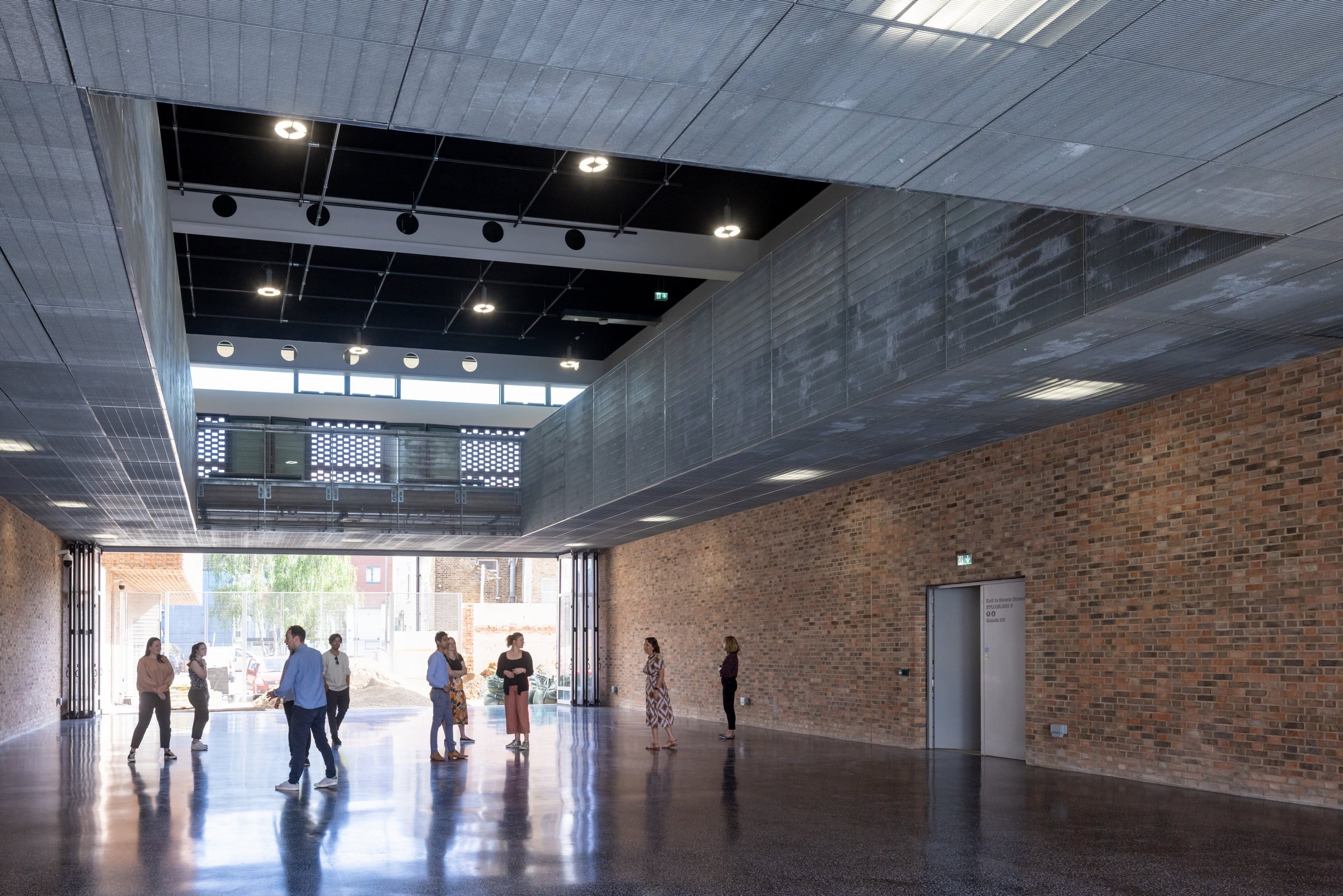
Intersection with Local Community: The RCA works closely with local groups, residents, schools and businesses to develop collaborative projects and create a positive impact in the social and cultural fabric of our local communities in Battersea, White City and Kensington. The expansion of our Battersea Campus has provided an opportunity for us to build on this important work, developing and strengthening our relationships with local communities in the Battersea area. Since 2018, over 10,000 people have participated in the RCA’s community engagement activities including events, exhibitions, tours and workshops.
The open design of the building’s ground floor has public entry points and access through the site, integrated street furniture and visual, audible access through large windows for the community to engage with the College’s core business.
Sustainability: Sustainability and energy efficiency are central to the new Battersea Campus development. Approximately £3 million has been invested in making the building BREEAM Excellent, through a combination of integrated design and most significantly a commitment to low and zero carbon technologies. The new facilities at Battersea will provide a sustainable future for the RCA, ensuring the continuation of its global contribution as the world’s number one university for art and design.
Architecture & Design Firms
Herzog & de Meuron: Established in Basel in 1978, Herzog & de Meuron is a partnership led by Jacques Herzog and Pierre de Meuron together with Senior Partners Christine Binswanger, Ascan Mergenthaler, Stefan Marbach, Esther Zumsteg, and Jason Frantzen. An international team of nearly over 500 collaborators including the two Founders, five Senior Partners, ten Partners, and 41 Associates work on projects across Europe, the Americas and Asia. The main office is in Basel with additional offices in Berlin, Munich, Paris, London, Copenhagen, New York, San Francisco, Hong Kong, Berlin and Copenhagen.
The practice has designed a wide range of projects from the small scale of a private home to the large scale of urban design. Many projects are highly recognised public facilities, such as museums, stadiums, and hospitals, and they have completed distinguished private projects including offices, laboratories and apartment buildings. Awards received include the Pritzker Architecture Prize (USA) in 2001, the RIBA Royal Gold Medal (UK), the Praemium Imperiale (Japan), both in 2007, and the Mies Crown Hall Americas Prize (USA) in 2014.
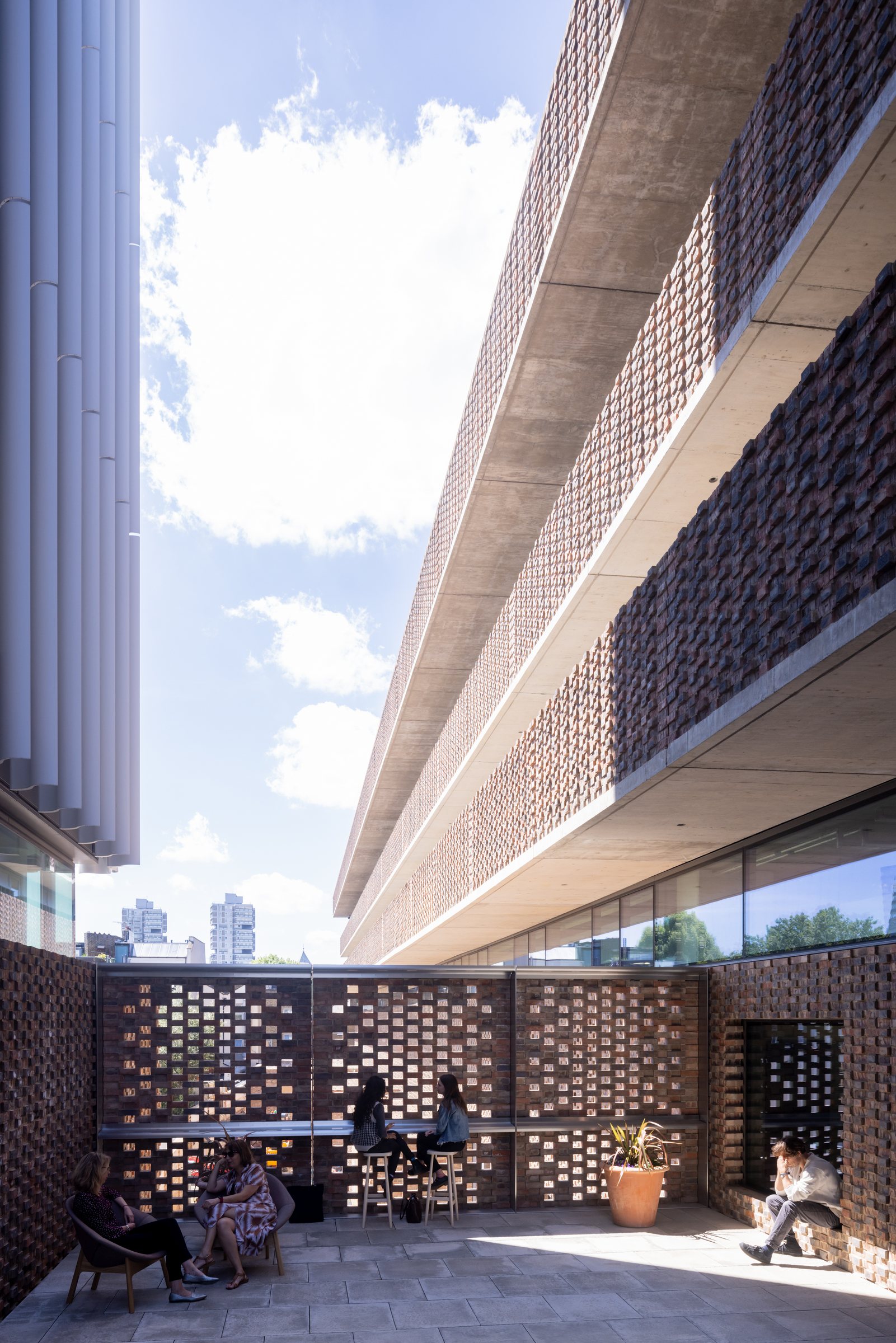
Mott McDonald
Opening opportunities with connected thinking. Mott MacDonald is a US$2bn engineering, management and development consultancy. Our purpose is to improve society by considering social outcomes in everything we do; relentlessly focusing on excellence and digital innovation, transforming our clients’ businesses, our communities and employee opportunities.
To this end we’re involved in:
• solving some of the world’s most urgent social, environmental and economic challenges
• helping governments and businesses plan, deliver and sustain their strategic goals
• responding to humanitarian and natural emergencies
• improving people’s lives
Our expertise by sector includes buildings, communications, defence, education, environment, health, industry, mining, oil and gas, power, transport, urban development, water, wastewater and more. Our skills encompass planning, studies and design, project finance, technical advisory services, project and programme management, management consultancy and beyond.
For every project, we create the blend of talent needed to create the right result – appropriate; cost, carbon and resource-efficient; safe, easy and swift to deliver and operate; reliable and resilient; delivering great outcomes.
Engineering. Management. Consultancy.
Architect Quotes
Herzog & de Meuron: “The RCA campus in Battersea is conceived as a porous and flexible ‘territory’ of platforms upon which the varied needs of the RCA curriculum are given space to change and grow, enabling the transformation of space as needed during this process. The studio and research buildings are designed as communities unto themselves – a place that encourages interactions between students, faculty and staff.
Our intention is also to create a civic connector, encouraging circulation through the site and inviting exchange between members of the RCA community, the neighbourhood and wider city.”
Herzog & de Meuron Team
Partners: Jacques Herzog, Pierre de Meuron, Ascan Mergenthaler (Partner in Charge)
Project Team: John O’Mara (Associate, Project Director), Giuseppe Giacoppo (Project Manager), Carmo Montalvão (Project Architect), Stuart Hill (Operations Manager), Jeremy Addison, Javier Artacho Abascal, Mikolaj Bazaczek (Visualisations), Tina Bergman, Marinke Boehm, Marija Brdarski, David Connor, Bruno de Almeida Martins (Visualisations), Dave Edwards, Niklas Erlewein, Paul Feeney, Elizabeth Ferguson, James Grainger, Merethe Granhus, Vasileios Kalisperakis (Visualisations), William Korytko, Maria Krasteva, Dan Ladyman, Johnny Lui, Luke Lupton, Kwamina Monney, Niklas Nordström, Piercarlo Quecchia, Carlos Tolosa Tejedor
Interior Design and Key Features
Overview: Throughout the interior design process, the RCA has sought to commission furniture and design products by RCA alumni wherever possible in order to create a living gallery of great design by RCA graduates, highlighting the significant contribution the College has made to furniture and industrial design over the years. The sustainability activities and aspirations of the manufacturers has played an important role in their selection.
Wayfinding: Calvert 107 is being used as the wayfinding font at the new Battersea campus with Margaret Calvert being consulted by Atelier Works during their design process. Calvert taught at the Royal College of Art for almost 40 years and was Head of Graphics from 1987 to 1991. Since then her fonts have been a mainstay of the College’s graphic identity.
Furniture:
Tip Ton Chair, Vitra – designed by Edward Barber & Jay Osger by [both graduated in Architecture from the RCA in 1996]
Lem S80, La Palma – Shin & Tomoko Azumi [Shin: MA Industrial Design, 1994; Tomoko: MA Furniture Design, 1995]
Bird Stool, designed by Michael Marriott [MA Furniture Design, 1993] for Very Good & Proper, Ed Carpenter [MA Design Products, 2001], André Klauser [MA Design Products, 2002].
Arc Stool, Custhom – Jemma Ooi & Nathan Philpott [both MA Textiles, 2007]
Sam Son chair, Magis – Konstantin Grcic [MA Industrial Design, 1990]
Several designs by Pearson Lloyd – Luke Pearson & Tom Lloyd [Luke: MA Furniture Design, 1993; Tom: MA Industrial Design, 1993] E8 table, Zeitraum – Mathias Hahn [MA Design Products, 2006]

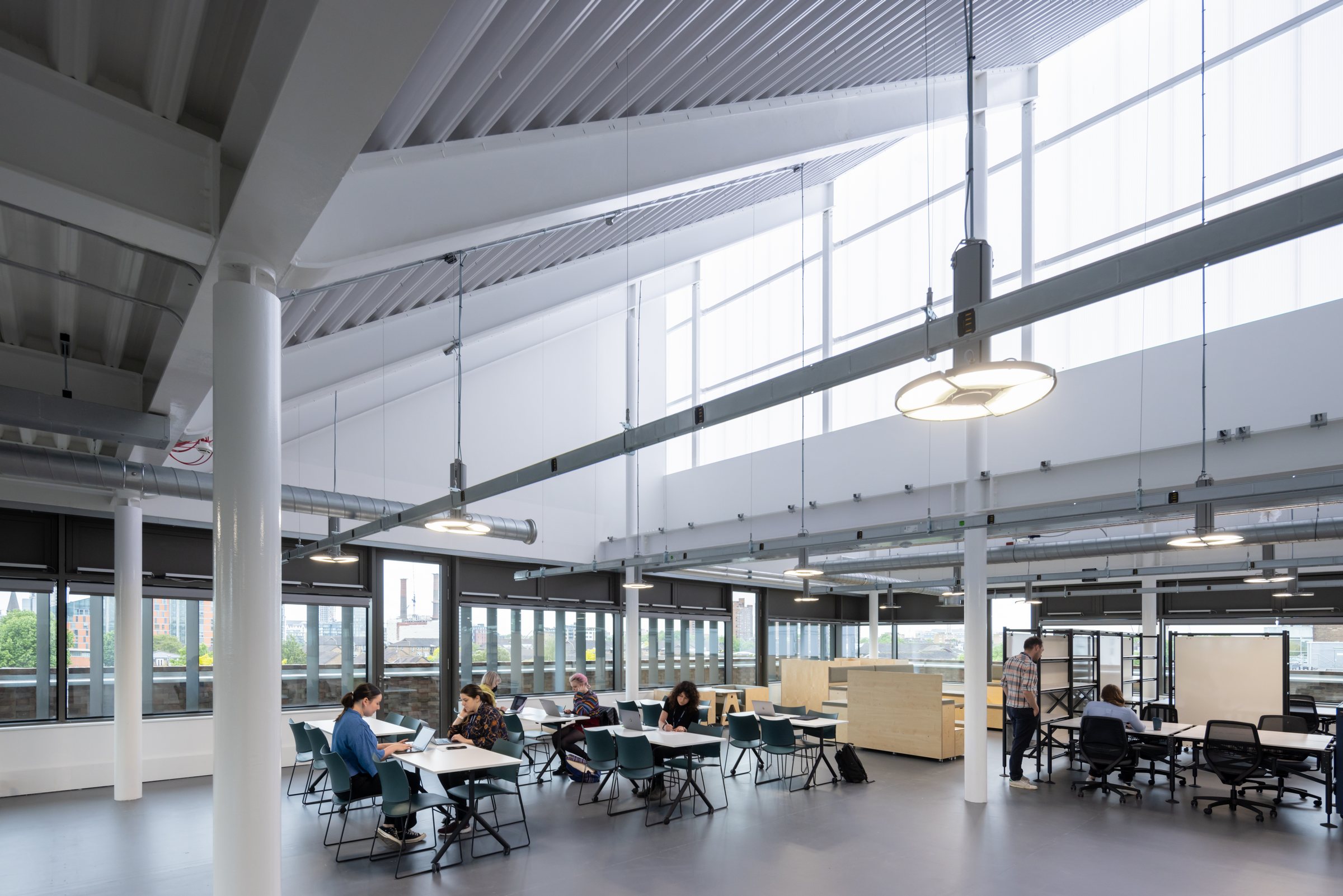





5 Comments
jazz for joyful moods
(October 22, 2023 - 3:16 am)jazz for joyful moods
jazz for joyful moods
sleep music
(October 28, 2023 - 2:01 pm)sleep music
sleep music
cafe jazz
(November 7, 2023 - 6:43 am)cafe jazz
cafe jazz
october jazz
(December 14, 2023 - 4:46 am)october jazz
october jazz
italian ambience
(February 24, 2024 - 3:42 pm)italian ambience
italian ambience
Comments are closed.